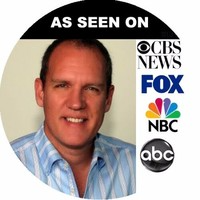HVAC Needs for Aging Populations and What Every Homeowner Should Know
-
 By
Michael Haines
By
Michael Haines
- Sep 18, 2024

By Mike Haines 09/18 Hello, I’m Mike Haines. Today, we’ll examine how HVAC systems can better serve the needs of aging populations. As people age, their bodies become more sensitive to temperature fluctuations, humidity levels, and indoor air quality, making HVAC systems critical to maintaining their comfort and safety. I’ll walk you through the specific HVAC requirements for the elderly, including temperature preferences, humidity control, and safety considerations.
Why HVAC Systems Are Vital for Aging Populations
For the elderly, maintaining an optimal indoor environment is more than just a matter of comfort—it’s about health and well-being. As we age, our bodies become less efficient at regulating temperature. This makes older adults more vulnerable to extreme heat and cold, which can lead to serious health risks such as heat stroke, hypothermia, or respiratory issues. In addition, improper humidity levels can exacerbate conditions like arthritis, asthma, and dry skin.
Furthermore, older adults may spend more time indoors, particularly during extreme weather conditions, increasing their reliance on HVAC systems to keep indoor environments healthy and comfortable. For these reasons, it's crucial to understand how to optimize HVAC systems to meet their unique needs.
Temperature Preferences for the Elderly
One of the key factors to consider when designing HVAC systems for aging populations is temperature control. Older adults often prefer a more consistent, warmer indoor environment, as they tend to feel cold more easily than younger individuals. This preference is due to a natural decline in metabolic rate and circulation that occurs with age.
Ideal Indoor Temperature
For most elderly individuals, an indoor temperature between 68°F and 74°F (20°C to 23°C) is ideal. This range provides enough warmth to keep them comfortable without making the room feel too hot. However, it’s important to adjust this based on the individual’s health and personal preferences. For example, people with certain health conditions, such as hypothyroidism or cardiovascular disease, may require slightly warmer environments.
Avoiding Extreme Temperatures
Elderly people are particularly sensitive to temperature extremes, which can have severe health consequences. HVAC systems should be designed to maintain a stable indoor climate, regardless of outdoor conditions. This may require upgrading insulation, sealing air leaks, and installing programmable or smart thermostats to automatically adjust temperatures throughout the day based on weather and time of use.
Smart thermostats like the Daikin One Touch Smart Thermostat - DTST-TOU-A are particularly useful because they allow family members or caregivers to monitor and adjust the temperature remotely. This feature can be invaluable for ensuring that an elderly person’s home remains comfortable and safe, even if they aren’t able to make adjustments themselves.
Energy Efficiency and Cost Savings for Aging Populations
Energy efficiency is a crucial consideration for elderly homeowners, especially those living on fixed incomes. Aging HVAC systems can consume a significant amount of energy, leading to higher utility bills. Upgrading to energy-efficient units, like a 3 ton AC unit with gas furnace, can help reduce energy consumption and provide reliable heating and cooling without the high cost. These systems are designed to operate with greater efficiency, allowing homeowners to maintain a comfortable temperature while keeping utility bills manageable.
Additionally, smart thermostats can make a big difference for elderly homeowners, enabling them to easily control their home's temperature and avoid energy waste. These thermostats can learn usage patterns and automatically adjust the temperature when the home is unoccupied, further contributing to cost savings. For added convenience and safety, family members or caregivers can remotely monitor and adjust the thermostat settings to ensure the home remains comfortable.
Enhancing Safety with Updated HVAC Systems
Older HVAC systems may present certain risks, such as carbon monoxide leaks or electrical malfunctions, which are particularly dangerous for elderly individuals. Installing modern HVAC units with built-in safety features, such as carbon monoxide detectors, auto-shutdown capabilities, and improved fire prevention, is essential. For homes that rely on older gas systems, upgrading to a newer gas furnace and AC unit can offer enhanced safety while delivering reliable performance.
Humidity Control for Aging Populations
Humidity plays a significant role in indoor air quality, and it can have a direct impact on the comfort and health of aging individuals. The right humidity level not only prevents respiratory issues but also helps in maintaining the integrity of a home’s structure and furnishings.
Ideal Humidity Levels
For elderly people, maintaining indoor humidity between 30% and 50% is generally recommended. Air that is too dry can cause skin irritation, exacerbate respiratory issues, and make the air feel colder than it is. On the other hand, too much humidity can lead to the growth of mold, bacteria, and dust mites, which can trigger allergies or asthma attacks.
Maintaining this balance is especially important for older adults with respiratory issues or compromised immune systems. Dehumidifiers and humidifiers can be integrated into HVAC systems to automatically adjust humidity levels, ensuring that the air remains healthy and comfortable at all times.
Humidity’s Effect on Comfort and Health
High humidity can make a room feel warmer, even if the temperature is within a comfortable range. This can lead to overheating, especially in elderly people who are already more sensitive to heat. On the flip side, dry air can irritate the eyes, nose, and throat, worsening conditions like asthma or bronchitis.
To improve indoor comfort for the elderly, consider adding a whole-house humidification or dehumidification system to the HVAC unit. These systems can automatically adjust the air’s moisture levels to maintain an optimal range, improving air quality and comfort.
Indoor Air Quality: A Critical Concern for the Elderly
As people age, they often develop respiratory or cardiovascular issues that make them more vulnerable to poor indoor air quality. Pollutants like dust, pollen, pet dander, and volatile organic compounds (VOCs) can exacerbate these conditions, making it vital to maintain clean indoor air.
Air Purification and Filtration
One of the best ways to improve indoor air quality is by incorporating high-efficiency air filters or air purifiers into the HVAC system. HEPA (High-Efficiency Particulate Air) filters, in particular, are highly effective at capturing airborne particles, including allergens and pollutants. For elderly individuals with respiratory problems like asthma or COPD (Chronic Obstructive Pulmonary Disease), upgrading to a system with advanced air filtration can make a significant difference in their overall health and comfort.
In addition to filtration, UV germicidal lights can be added to HVAC systems to eliminate bacteria, viruses, and mold spores from the air, further improving air quality. This can be especially beneficial during flu season, as older adults are more susceptible to infections.
Ventilation for Fresh Air
Good ventilation is another key aspect of maintaining indoor air quality. For aging populations, ensuring proper airflow can help reduce the concentration of indoor pollutants and prevent the buildup of stale air. Energy Recovery Ventilators (ERVs) or Heat Recovery Ventilators (HRVs) are great additions to HVAC systems, as they allow fresh outdoor air to circulate through the home without compromising energy efficiency.
Safety Considerations for HVAC Systems
Ensuring the safety of elderly individuals when it comes to HVAC systems is just as important as temperature and humidity control. Safety features should be a top priority to prevent accidents, injuries, or system malfunctions that could endanger the lives of older adults.
Carbon Monoxide Detection
Older HVAC systems that run on natural gas, oil, or propane can pose a carbon monoxide risk. Carbon monoxide is a colorless, odorless gas that can cause poisoning or even death when inhaled in large amounts. It’s crucial to have a working carbon monoxide detector in homes with aging HVAC systems, especially those inhabited by elderly individuals.
Many modern HVAC systems come equipped with carbon monoxide detectors, but it’s always a good idea to install additional detectors near sleeping areas and other key locations throughout the home. These detectors should be checked regularly to ensure they are functioning properly.
Fire Prevention and Electrical Safety
As elderly people are often less mobile, they may not be able to respond quickly in the event of a fire or HVAC malfunction. To reduce fire risks, ensure that the HVAC system is regularly maintained and that all electrical components are in good working order. Replacing outdated wiring, checking for frayed connections, and ensuring that electrical circuits aren’t overloaded can go a long way in preventing fires or electrical hazards.
Installing a system with auto-shutdown features in the event of overheating or malfunction can also enhance safety and provide peace of mind for both the elderly person and their caregivers.
Zoning Systems for Personalized Comfort
Zoning systems allow different areas of a home to be heated or cooled independently of each other. For elderly individuals who spend most of their time in specific rooms, zoning can be an excellent way to maintain comfort while reducing energy costs. These systems allow you to set different temperatures for different rooms or zones, ensuring that the spaces the elderly person occupies are always at a comfortable temperature.
In addition to personalized comfort, zoning systems can help prevent elderly individuals from having to adjust the thermostat frequently, which may be difficult for those with mobility issues.
Final Thoughts
HVAC systems play an essential role in ensuring the comfort, health, and safety of aging populations. As older adults are more susceptible to temperature fluctuations, poor indoor air quality, and humidity imbalances, it’s crucial to customize HVAC systems to meet their specific needs. By maintaining ideal temperatures, optimizing humidity, improving air quality, and incorporating safety features, you can ensure that your loved ones enjoy a comfortable and safe living environment.

 and now, NASCAR Racing Sponsor
and now, NASCAR Racing Sponsor










